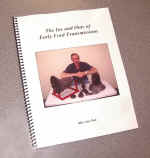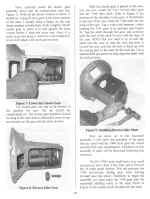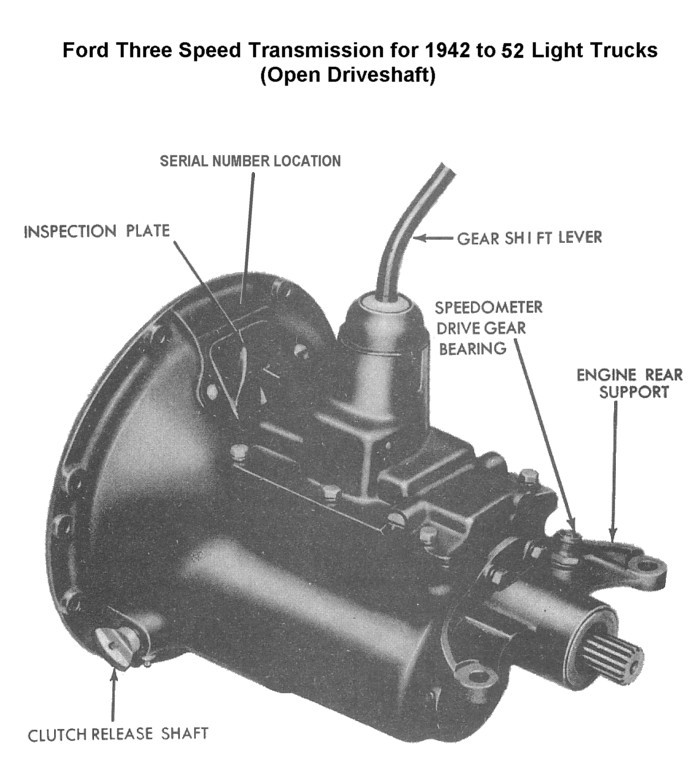|
Ford Top Loader Three Speed Transmission |
||||
|
|
||||
|
Home Parts Drawings Web Links Tune-Up & Service Serial Numbers Engine ID Trans Identification Model ID Terms of Sale Contact Us Our Online Store Our Catalog |
The popular transmission used on Ford passenger cars up to 1939 and light pickup trucks up to 1952 is seen here in its variations. Identifying features are now pointed out so you know what to look for. The following links will take you to more specific web pages on those features: There are many misconceptions floating around about the early three speed transmissions. The design was successfully used for many years in Ford passenger cars and light trucks. It worked well, and was improved upon by Ford as the years went by. The common complaint heard in the 1950's and today was that the gearbox would not hold up to use behind a built-up motor in racing conditions. In fact, that was pretty much the case. If the driver was running 175hp and more, and competing in racing conditions, he might blow the case apart, or break the gears. New gears or scrap yard transmissions were inexpensive enough, so the solution was to fix it up and race again. Side-stepping the clutch to burn out the tires with a hot rod motor was a risky driving pattern that would aggravate the situation. Fast forward to today and you find a much different situation. Racing continues of course, but for the most part, people are building state-of-the-art motors and chassis with the combination of motor and transmission to handle the severe conditions. Today's hot rod builder might use a Chev small block V8 with a Turbo 350 automatic transmission, or even a T5 five speed manual transmission. However, the resurgence of hotrod restoration is pushing the demand for good three speed toploader transmissions, just like they ran back in the day. Combined with a nice flathead V8, and the old Ford banjo type rear end, you have the "right" combination of parts to reflect the way it was. Plus, you were using all-Ford parts that would easily bolt together without major modifications. It might seem easy to drop an automatic transmission in that car or truck, and for some people, it needs to be that way for physical drivability. But, for those who do not want to hack up a good chassis, and prefer the experience of driving that car just like Dad or Grandpa did, the right answer is to use the original type Ford three speed transmission. Properly rebuilt with close tolerances, these transmissions will shift nicely and handle most power applications without complaint. Of course, the early (1932-48) three speed transmissions were not synchronized into first or reverse gear. They did have the 2nd and High synchronizer for a more modern kind of shifting. The 1939 and later synchronizer design allowed for improved shifting, which is what the early racers and hot rodders wanted. That is not to say that a stock, restored, original Ford car running a 1932-38 transmission would not enjoy his driving experience. Take some time and visit the links shown above to learn more about these well-designed and easy to repair transmissions. |
|||
|
Now
Available....A Complete Ford |
||||
|
The transmission pictured above is the open driveshaft version of the typical Ford toploader three speed transmission that was used in the 1/2 ton light duty pickup trucks from 1942 to 1952 (including the 48-52 F-1 truck). It was essentially the same gearbox as the late 1939 style toploader except for the different parts used to adapt the transmission for open drive.....longer mainshaft (or output shaft as commonly known) and the different rear bearing retainer or rear support. Ford used the late style synchronizer in these open drive transmissions also. The clutch release shaft up through 1939 was a straight shaft with a lever pinned on. In 1940 Ford changed this shaft to the flattened end (as shown here). The clutch release shafts can be interchanged in this case from 1932 on, but the user would want to match his up to the clutch pedal set-up on his vehicle. As always, if you see or read something that you feel is incorrect, and can support a correction with a proven or documented source, feel free to contact us regarding a correction or to add information. |
||||



